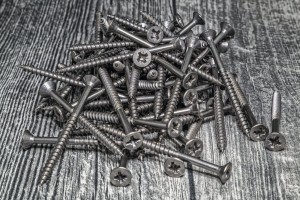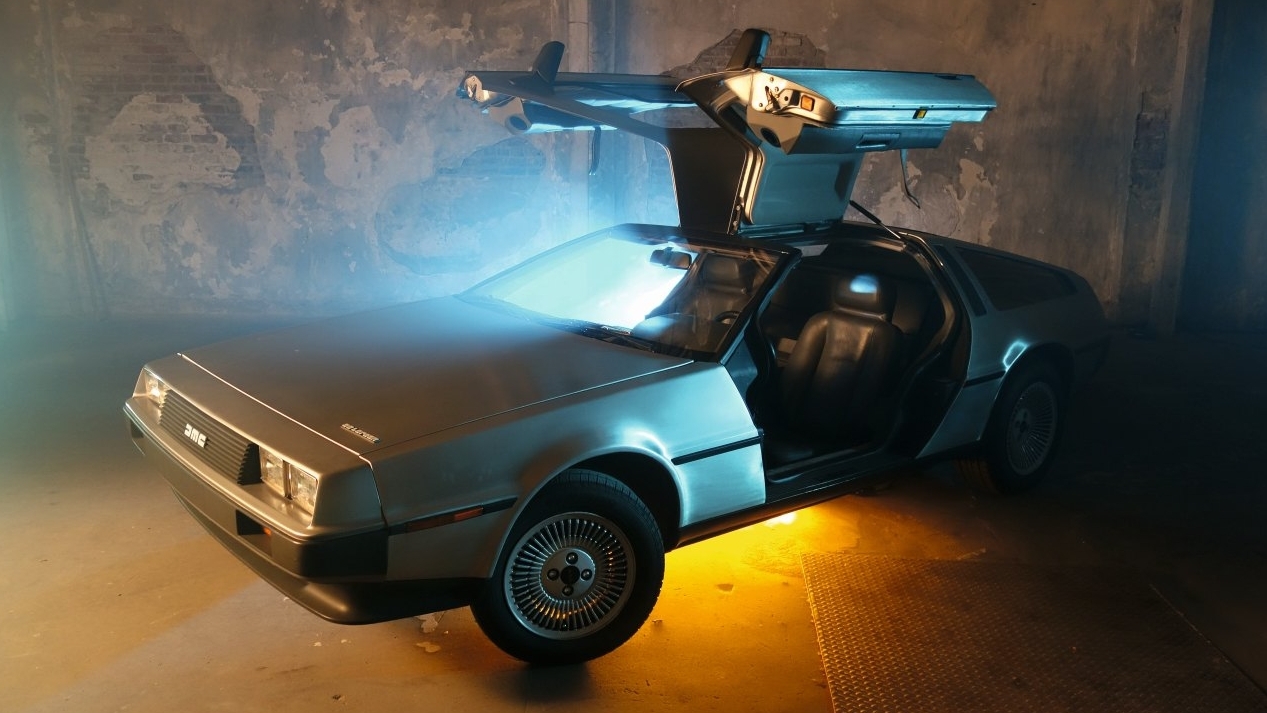Question: Due to increased demand, we would like to expand the restoration of classic car parts. Up to now, we have been supplied with steel parts and non-ferrous metals, which do not cause any problems. We do not accept die-cast zinc for restoration. Recently, we have been receiving an increasing number of inquiries about stainless steel parts that have already been chrome-plated.
As we are unsure whether we should process them or reject them, we would like to know whether you can recommend a process that allows these parts to be stripped and recoated without any problems.
 Stainless steel screwsAnswer:"Stainless steel" is a collective term for alloyed and partially unalloyed steels. We normally associate the term with V2A and V4A, but it can actually refer to a wide range of steels. This can lead to numerous problems, particularly during restoration, both during decoating and recoating. Even if the steel can be roughly classified, this does not say much about quality and processing. In addition, the surface properties can change negatively during decoating. For example, iron is dissolved and the surface therefore has a higher proportion of alloy partners such as nickel, chromium, niobium or molybdenum. In addition, the structural condition is uncertain. Just because it has already been electroplated does not mean that a second coating will be successful.
Stainless steel screwsAnswer:"Stainless steel" is a collective term for alloyed and partially unalloyed steels. We normally associate the term with V2A and V4A, but it can actually refer to a wide range of steels. This can lead to numerous problems, particularly during restoration, both during decoating and recoating. Even if the steel can be roughly classified, this does not say much about quality and processing. In addition, the surface properties can change negatively during decoating. For example, iron is dissolved and the surface therefore has a higher proportion of alloy partners such as nickel, chromium, niobium or molybdenum. In addition, the structural condition is uncertain. Just because it has already been electroplated does not mean that a second coating will be successful.
As different as the surfaces of the individual stainless steel grades are, the pickling and pre-treatment processes must be just as different. In practice, this means that the optimum method must be determined in almost every case on the basis of specific and problem-related investigations. It is also due to this fact that the number of methods and recipes given for such purposes is so numerous and difficult to keep track of.
Due to the multitude of difficulties, there is no general, perfect workflow. We can only give you a few tips which, in our experience, work for a large number of steels, without being able to give a guarantee for the specific individual case. If you decide to accept the orders, you must clarify the risk with the customer before accepting them.
You could come up with the idea of removing the chrome coating from the stainless steel and then polishing it and installing it uncoated. However, there are many chrome-plated elements in classic cars in particular, where stainless steel parts, especially those with a high nickel content, differ significantly in color. Nevertheless, our recommendation would be to clarify this with the customer.
Determining the material
 The starting point is always an informative discussion with the customer. This involves finding out how old the part in question is. The origin can also provide important information. It can generally be assumed that the older the coating and material, the worse they are. This means that the older the part, the more closely it needs to be examined and the more carefully it needs to be treated. However, there are exceptions, e.g. times when the material quality was worse than in earlier times (partly for cost reasons). For example, steel quality in the early 2000s was significantly worse than in the 1990s, which was particularly noticeable in electroplating shops.
The starting point is always an informative discussion with the customer. This involves finding out how old the part in question is. The origin can also provide important information. It can generally be assumed that the older the coating and material, the worse they are. This means that the older the part, the more closely it needs to be examined and the more carefully it needs to be treated. However, there are exceptions, e.g. times when the material quality was worse than in earlier times (partly for cost reasons). For example, steel quality in the early 2000s was significantly worse than in the 1990s, which was particularly noticeable in electroplating shops.
You can visually inspect the material during the consultation. Defects in the coating can provide information about the coating sequence or even the base material. If this is not the case, we recommend removing the coating layer by layer in a non-visible area. As a rule, stainless steel was and is chrome-plated directly, but you cannot rely on this.
In this case, chrome is best removed with concentrated hydrochloric acid. If there is a nickel layer underneath, this can be removed anodically with 700 g/L sulphuric acid at 2-10 A/dm2. This will dissolve any copper underneath, if present. If a coating subsequently forms, this must be removed to reveal the base material.
Now comes the most important step in material analysis: X-ray fluorescence analysis. Modern devices break down the elements and their content and provide the most important information on how to proceed.
Tip:
If you receive several parts, examine each of them. Even with screws. If this is not done, the number of parts can be drastically reduced during demetallization. Even checking the weight is not 100% reliable.
Demetallization and pre-treatment
 If the steel has been chrome-plated directly, this can best be removed anodically using 100 g/L NaOH at 1-10 A/dm2. We recommend the above-mentioned method with hydrochloric acid only for small areas of a steel grade whose exact composition may be doubtful. If there are other layers, such as nickel and copper, underneath, these can be removed as described above. It should be noted that these process steps are critically monitored in order to be able to intervene in the event of unexpected reactions with underlying layers or the base material.
If the steel has been chrome-plated directly, this can best be removed anodically using 100 g/L NaOH at 1-10 A/dm2. We recommend the above-mentioned method with hydrochloric acid only for small areas of a steel grade whose exact composition may be doubtful. If there are other layers, such as nickel and copper, underneath, these can be removed as described above. It should be noted that these process steps are critically monitored in order to be able to intervene in the event of unexpected reactions with underlying layers or the base material.
Recoating depends on the condition of the material and the customer's wishes. A frequent request is the restoration of mechanical damage such as dents or small pores or even holes. In these cases, direct chrome plating is not sufficient.
If simple chrome plating is sufficient, the steel must first be polished, as the chrome layer reproduces the underlying surface and does not have its own shine.
We can recommend polishing in all cases, as this removes any remaining residues, possibly in the atomic range, and gives them a uniform appearance and structure.
Coating
It goes without saying that polished surfaces in particular need to be cleaned thoroughly. Stainless steel is then preferably thinly nickel-plated in a Ni-Strike electrolyte. We recommend a preparation with 240 g/L nickel chloride and 80 ml/L concentrated hydrochloric acid, nickel anodes, 3-5 A/dm2, 20°C, 3-5 minutes. Prior to this, the stainless steel can be activated in diluted hydrochloric acid and immersed in the Ni-Strike bath without intermediate rinsing.
Cathodic pre-treatment is also often recommended before nickel plating. Commonly used here are:
- 20-50 % sulphuric acid at room temperature and 0.5 A/dm2
- cathodic treatment in 2 to 20 weight percent hydrochloric acid at 2 A/dm2 and room temperature (2-4 minutes).
We would also like to mention the possibility of pre-coating particularly high-alloy stainless steels with high demands on the load-bearing capacity of the surface with pre-gold instead of nickel. Handling is usually easier than with nickel, especially as you can take a little more time after gold plating. The results have a higher adhesive strength, ductility and thermal resistance. In our experience, the increased requirements do not apply to classic car parts.
If defects are to be repaired, we recommend sulphuric acid copper plating. After nickel plating, treatment with a cyanide copper electrolyte (or a cyanide-free alternative) is not necessary. The thickness of the copper layer depends on the defects. It may be necessary to intermediate post-treat and copper plate several times. This is followed by bright nickel plating and chrome plating.
Adhesion test
To prevent complaints, we also recommend testing the adhesive strength of classic car parts. Occasionally this is carried out using tesaband®, but the adhesive strength of the tapes is too low for private use to make a qualified statement. Stone tape / repair tape has a high adhesive strength on steel.
A temperature test provides better information because it covers the entire surface. One to two hours at 120 °C reveals a great deal about the quality of the coating. This test corresponds to an ageing test (RGT rule). With a dwell time of two hours in the oven and a reaction factor of 2, the test corresponds to an ageing period of 85.33 days (2048 hours). The workpieces are often quenched in water and then subjected to the above-mentioned adhesion test.
Small parts in industrial production are often subjected to a bending test, which is of course out of the question for individual parts due to their destruction.
Literature
[1] Practical electroplating technology. 7th ed. Eugen G. Leuze publishing house, Bad Saulgau, 2013
[2] Technology of electroplating 2nd ed. Eugen G. Leuze Publishing House, Bad Saulgau, 2008
[3] Rituper,R.: Pickling of metals. Eugen G. Leuze Publishing House, Bad Saulgau. 1993


